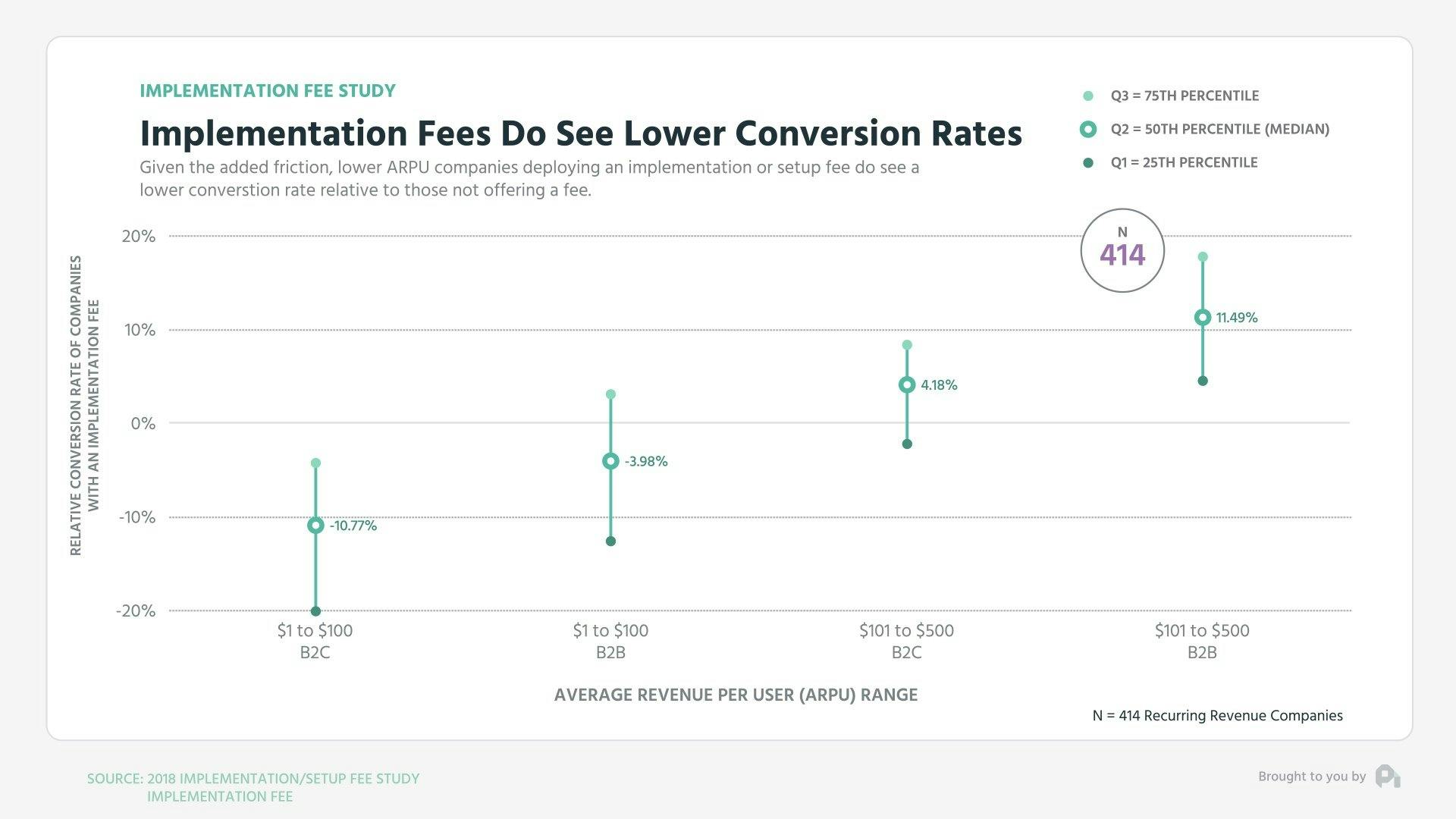Ah, one of the great debates in SaaS: implementation fees. For the uninitiated, implementation fees are essentially an extra fee for training, setup, or actual technical implementation that you pay in addition to what you’re paying for the product. Although mainly seen in B2B, there are quite a few B2C companies that deploy this tactic.
On this episode of the ProfitWell Report, Cem Hurturk, Co-Founder of Sendloop - asks us "How do implementation fees affect unit economics?" To answer his question, we looked at just under one thousand companies and over half a million subscription customers. Here’s what we found.
Improve CAC recovery and retention with implementation fees
To get right to the point, implementation fees dramatically improve customer acquisition cost or CAC recovery and actually improve retention rates across different ARPU customers considerably.
From a CAC recovery standpoint those companies utilizing an implementation fee of some sort are seeing 30-40% lower CAC recovery timelines than their non-implementation fee counterparts.

This is intuitive, because no matter what your implementation fee looks like, the basic math will tell you that this revenue will clear some of the cost of acquiring that customer.
Further though, retention is an important consideration when looking at an implementation fee, because most of the time in SaaS and the world of subscriptions you’re not using the fee to cover the cost of setup, you’re using it to cover the cost of some sort of training, which is used to get your customer using the product, seeing the value, etc.
Companies with implementation fees are typically seeing roughly 10 to 20% better net retention across different ARPUs than their non-implementation fee cousins.
This data bucks the notion that friction is bad for business. In reality, a little bit of friction not only helps CAC recovery, but your retention as users are pushed to see the value in what they’re buying.
Lower conversion rates - The case against implementation fees
Critics of implementation fees point to the conversion implications and they aren’t completely wrong. When comparing the two models, low ARPU buyers did convert at a lower rate as their higher ARPU counterparts when faced with an implementation fee, but considering those customers with the fee were retained longer, there’s an argument to be made that the numbers net out still for the better in the long run.

Ultimately, your job as a leader in the recurring revenue economy is to understand your customer to the point that you can utilize all of the tools at your disposal to serve them well and align your unit economics. Implementation and setup fees of some sort, although a bit controversial, may be an effective way for you to start counterintuitively slow down the conversion process for nice, long term gains.




